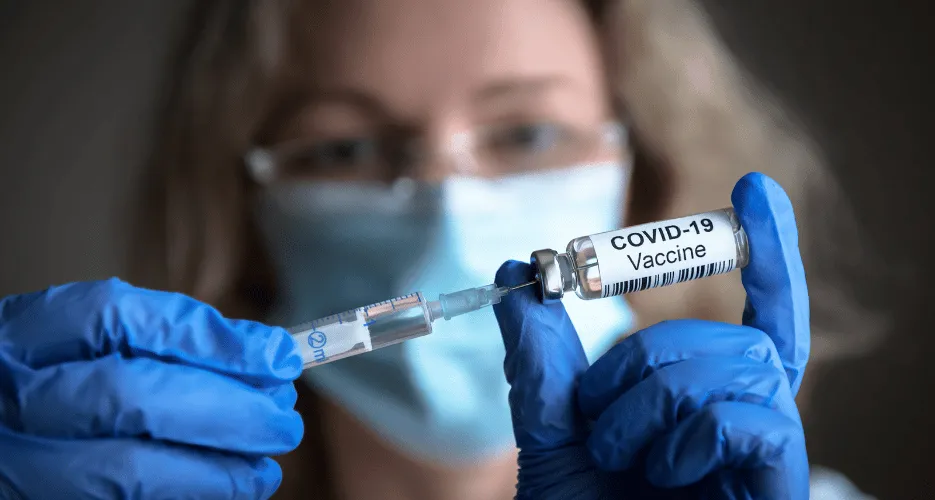What is Tumor Lysis Syndrome?

Tumor Lysis Syndrome (TLS) is one of the most critical and common oncologic emergencies. It occurs when cancer cells break down rapidly, releasing their contents into the bloodstream. This sudden release can overwhelm the body, leading to organ damage. It can develop spontaneously or more commonly after beginning cancer treatments, such as chemotherapy, especially in patients affected by tumor side effects. Both adults and children with cancer are susceptible to experiencing TLS.
Why is Tumor Lysis Syndrome Dangerous?
TLS can cause body electrolytes to drop or increase, leading to life-threatening conditions, including:
- Acute Kidney Injury (AKI): Excessive uric acid and other substances can accumulate, leading to kidney dysfunction or failure.
- Heart arrhythmias: Elevated potassium levels (hyperkalemia) can disrupt heart rhythms, potentially leading to cardiac arrest.
- Low calcium levels or hypocalcemia:Can cause muscle cramps, seizures, and other severe complications.
Who is at Risk for Tumor Lysis Syndrome?
While tumor lysis syndrome is most commonly associated with leukemia and high-grade lymphomas (listed below), it can also occur in solid tumors, particularly after aggressive chemotherapy. Rarely, TLS can occur spontaneously before any treatment is initiated.
Although TLS can occur in various cancer types, it is most frequently associated with:
- High-risk tumors: Advanced Burkitt lymphoma, acute lymphocytic leukemia (ALL) with very high white blood cell (WBC) counts, and diffuse large B-cell lymphoma (DLBCL) with elevated lactate dehydrogenase (LDH) levels.
- Intermediate-risk tumors: Acute myeloid leukemia with moderate WBC counts, certain types of lymphomas, and less aggressive forms of leukemia, are still at risk but to a lesser extent.
- Low-risk tumors: These include chronic lymphocytic leukemia (CLL), solid tumors, multiple myelomas, and indolent lymphomas, though they are less commonly associated with TLS.
What are Tumor Lysis Syndrome’s Signs and Symptoms?
Patients experiencing TLS may present with a range of symptoms, including:
- Nausea, vomiting, and diarrhea
- Muscle cramps and weakness
- Seizures or altered mental status
- Difficulty breathing
- Irregular heart rhythms
How is Tumor Lysis Syndrome Diagnosed?
Early diagnosis of TLS is crucial for effective treatment. Healthcare providers monitor patients for key indicators, including:
- Blood tests: Monitoring of electrolytes such as potassium, phosphate, calcium, and uric acid levels.
- Kidney function tests: To assess kidney performance and detect early signs of damage, tests can be performed by blood (analyzing blood chemistry), or a 24-hour collection of urine analysis can give a more accurate diagnosis.
- Heart monitoring: To detect any change in your heart rhythm that may result from electrolyte imbalances.
What Therapies Can Cause Tumor Lysis Syndrome?
Therapies that can rapidly kill cancer cells, for example; chemotherapy, and some combinations especially combined with agents such as venetoclax or obinutuzumab, radiation therapy, corticosteroids, targeted therapy, hormonal therapy and biological therapy.
TLS as many adverse events, depends on the body’s ability to respond to each therapy and the way in which they are administered. In theory, all treatments that target cancer cells to be destroyed have a risk of presenting tumor lysis syndrome. You can talk to your cancer specialist about specific concerns regarding your treatment.
How is Tumor Lysis Syndrome Treated?
Treatment of tumor lysis syndrome focuses on correcting the metabolic imbalances and protecting vital organs.
- Hydration: Proper hydration is essential to help flush out excess electrolytes and waste products from the kidneys. Drinking plenty of water before and during treatment can help prevent TLS. Intravenous (IV) fluids may also be administered to ensure proper hydration.
- Medications:
- Allopurinol: This medication is commonly used to reduce uric acid levels in the blood, which can accumulate during TLS. It is often started a few days before treatment and continued until the risk has passed.
- Rasburicase: In high-risk patients, rasburicase may be used instead of or in addition to allopurinol. Rasburicase breaks down uric acid into a more easily excreted substance, helping to prevent kidney damage.
- Electrolytes: Medications may be prescribed to manage specific electrolyte imbalances, such as potassium binders; when potassium levels are too high (hyperkalemia), or phosphate binders to decrease high levels of phosphate in the blood (hyperphosphatemia).
- Close monitoring: Patients at risk for TLS require close monitoring of their blood chemistry, especially during the first few days of treatment. Regular blood tests check levels of uric acid, potassium, calcium, and phosphate, allowing for prompt intervention if imbalances occur.
- Gradual dose escalation: For therapies like venetoclax, a gradual dose escalation schedule is often employed to reduce the risk of TLS. Starting with a lower dose allows the body to adapt to the treatment, minimizing the sudden release of cellular contents.
- Dialysis: In severe cases where tumor lysis syndrome leads to kidney failure or life-threatening electrolyte imbalances, dialysis may be necessary to remove excess waste products and stabilize the patient's condition.
Can Tumor Lysis Syndrome Be Prevented?
For patients at high risk of developing TLS, preventive measures are essential:
- Preventive treatment: Medications to reduce uric acid levels and protect kidneys are often started before initiating chemotherapy.
- Close monitoring: High-risk patients require vigilant monitoring during and after cancer treatment to catch any early signs of TLS.
Preventing and managing tumor lysis syndrome requires a coordinated effort from an interprofessional team, including oncologists, nephrologists, critical care specialists, and nurses. Early diagnosis, rapid intervention, and continuous monitoring are key to improving patient outcomes.
Tumor Lysis Syndrome is a life-threatening condition that demands immediate medical attention. Recognizing the early signs of tumor lysis syndrome can significantly reduce the risk of severe complications. For patients undergoing cancer treatment, regular monitoring and close contact with their healthcare team can ensure the best possible outcomes.
Accelerate the discovery of new treatment options by creating an account at HealthTree Cure Hub, an innovative tool that powers life-saving research!
If you are interested in finding a clinical trial, locating a specialist, or staying on top of your health by reading comprehensive news about your disease, you can create a free HealthTree Cure Hub account!
Source:
Tumor Lysis Syndrome (TLS) is one of the most critical and common oncologic emergencies. It occurs when cancer cells break down rapidly, releasing their contents into the bloodstream. This sudden release can overwhelm the body, leading to organ damage. It can develop spontaneously or more commonly after beginning cancer treatments, such as chemotherapy, especially in patients affected by tumor side effects. Both adults and children with cancer are susceptible to experiencing TLS.
Why is Tumor Lysis Syndrome Dangerous?
TLS can cause body electrolytes to drop or increase, leading to life-threatening conditions, including:
- Acute Kidney Injury (AKI): Excessive uric acid and other substances can accumulate, leading to kidney dysfunction or failure.
- Heart arrhythmias: Elevated potassium levels (hyperkalemia) can disrupt heart rhythms, potentially leading to cardiac arrest.
- Low calcium levels or hypocalcemia:Can cause muscle cramps, seizures, and other severe complications.
Who is at Risk for Tumor Lysis Syndrome?
While tumor lysis syndrome is most commonly associated with leukemia and high-grade lymphomas (listed below), it can also occur in solid tumors, particularly after aggressive chemotherapy. Rarely, TLS can occur spontaneously before any treatment is initiated.
Although TLS can occur in various cancer types, it is most frequently associated with:
- High-risk tumors: Advanced Burkitt lymphoma, acute lymphocytic leukemia (ALL) with very high white blood cell (WBC) counts, and diffuse large B-cell lymphoma (DLBCL) with elevated lactate dehydrogenase (LDH) levels.
- Intermediate-risk tumors: Acute myeloid leukemia with moderate WBC counts, certain types of lymphomas, and less aggressive forms of leukemia, are still at risk but to a lesser extent.
- Low-risk tumors: These include chronic lymphocytic leukemia (CLL), solid tumors, multiple myelomas, and indolent lymphomas, though they are less commonly associated with TLS.
What are Tumor Lysis Syndrome’s Signs and Symptoms?
Patients experiencing TLS may present with a range of symptoms, including:
- Nausea, vomiting, and diarrhea
- Muscle cramps and weakness
- Seizures or altered mental status
- Difficulty breathing
- Irregular heart rhythms
How is Tumor Lysis Syndrome Diagnosed?
Early diagnosis of TLS is crucial for effective treatment. Healthcare providers monitor patients for key indicators, including:
- Blood tests: Monitoring of electrolytes such as potassium, phosphate, calcium, and uric acid levels.
- Kidney function tests: To assess kidney performance and detect early signs of damage, tests can be performed by blood (analyzing blood chemistry), or a 24-hour collection of urine analysis can give a more accurate diagnosis.
- Heart monitoring: To detect any change in your heart rhythm that may result from electrolyte imbalances.
What Therapies Can Cause Tumor Lysis Syndrome?
Therapies that can rapidly kill cancer cells, for example; chemotherapy, and some combinations especially combined with agents such as venetoclax or obinutuzumab, radiation therapy, corticosteroids, targeted therapy, hormonal therapy and biological therapy.
TLS as many adverse events, depends on the body’s ability to respond to each therapy and the way in which they are administered. In theory, all treatments that target cancer cells to be destroyed have a risk of presenting tumor lysis syndrome. You can talk to your cancer specialist about specific concerns regarding your treatment.
How is Tumor Lysis Syndrome Treated?
Treatment of tumor lysis syndrome focuses on correcting the metabolic imbalances and protecting vital organs.
- Hydration: Proper hydration is essential to help flush out excess electrolytes and waste products from the kidneys. Drinking plenty of water before and during treatment can help prevent TLS. Intravenous (IV) fluids may also be administered to ensure proper hydration.
- Medications:
- Allopurinol: This medication is commonly used to reduce uric acid levels in the blood, which can accumulate during TLS. It is often started a few days before treatment and continued until the risk has passed.
- Rasburicase: In high-risk patients, rasburicase may be used instead of or in addition to allopurinol. Rasburicase breaks down uric acid into a more easily excreted substance, helping to prevent kidney damage.
- Electrolytes: Medications may be prescribed to manage specific electrolyte imbalances, such as potassium binders; when potassium levels are too high (hyperkalemia), or phosphate binders to decrease high levels of phosphate in the blood (hyperphosphatemia).
- Close monitoring: Patients at risk for TLS require close monitoring of their blood chemistry, especially during the first few days of treatment. Regular blood tests check levels of uric acid, potassium, calcium, and phosphate, allowing for prompt intervention if imbalances occur.
- Gradual dose escalation: For therapies like venetoclax, a gradual dose escalation schedule is often employed to reduce the risk of TLS. Starting with a lower dose allows the body to adapt to the treatment, minimizing the sudden release of cellular contents.
- Dialysis: In severe cases where tumor lysis syndrome leads to kidney failure or life-threatening electrolyte imbalances, dialysis may be necessary to remove excess waste products and stabilize the patient's condition.
Can Tumor Lysis Syndrome Be Prevented?
For patients at high risk of developing TLS, preventive measures are essential:
- Preventive treatment: Medications to reduce uric acid levels and protect kidneys are often started before initiating chemotherapy.
- Close monitoring: High-risk patients require vigilant monitoring during and after cancer treatment to catch any early signs of TLS.
Preventing and managing tumor lysis syndrome requires a coordinated effort from an interprofessional team, including oncologists, nephrologists, critical care specialists, and nurses. Early diagnosis, rapid intervention, and continuous monitoring are key to improving patient outcomes.
Tumor Lysis Syndrome is a life-threatening condition that demands immediate medical attention. Recognizing the early signs of tumor lysis syndrome can significantly reduce the risk of severe complications. For patients undergoing cancer treatment, regular monitoring and close contact with their healthcare team can ensure the best possible outcomes.
Accelerate the discovery of new treatment options by creating an account at HealthTree Cure Hub, an innovative tool that powers life-saving research!
If you are interested in finding a clinical trial, locating a specialist, or staying on top of your health by reading comprehensive news about your disease, you can create a free HealthTree Cure Hub account!
Source:

about the author
Jimena Vicencio
Jimena is an International Medical Graduate and a member of the HealthTree Writing team. She has a passion for languages and is currently learning Japanese. In her free time, she loves playing with her cats. Jimena is also pursuing a bachelor's degree in journalism.
More on Navigating Your Health
Get the latest thought leadership on your B-Cell Lymphoma delivered straight to your inbox
Subscribe to the weekly newsletter for news, stories, clinical trial updates, and helpful resources and events with cancer experts.










